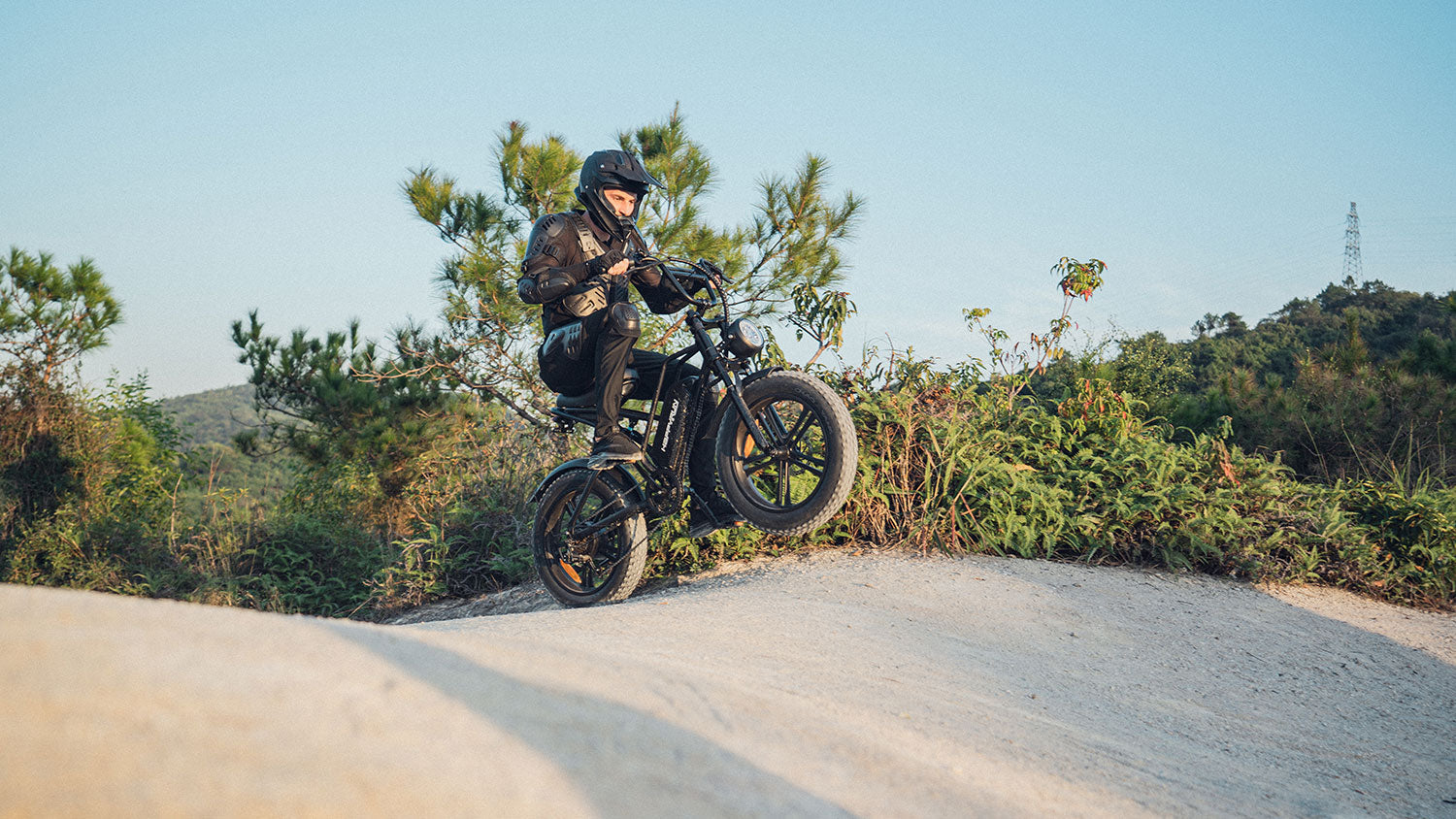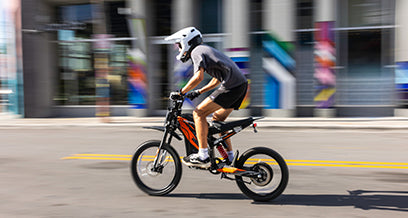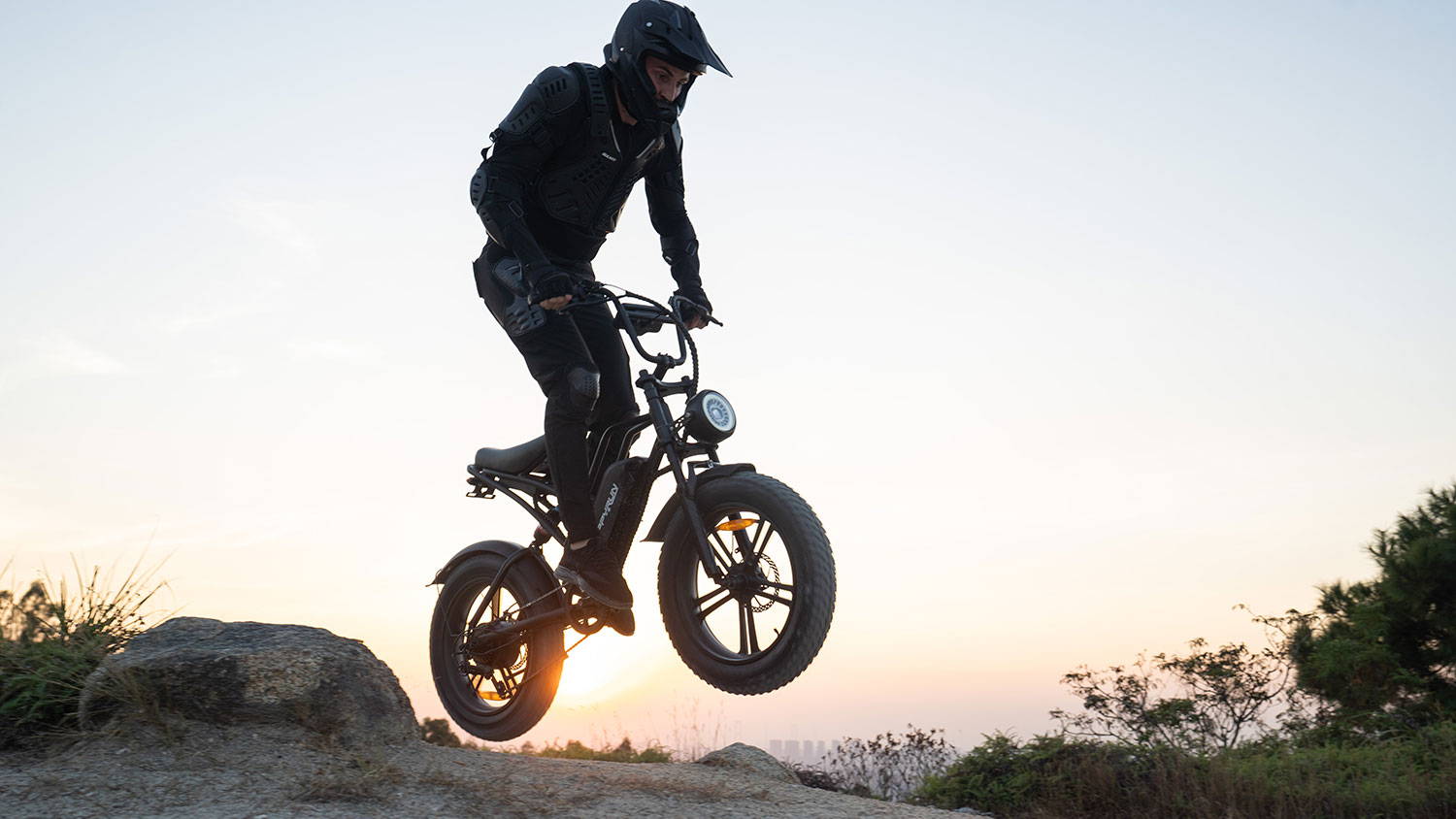
Demystifying E-Bike Batteries: Understanding Specs and Maximizing Performance
A lot of people think that understanding the batteries of the high voltage e-bike even when you already know a lot about them can be hard. It is done primarily by electrical engineers who are outright good in chemistry, physics, and mathematics.
In the articles and facts about high voltage e-bikes, you will meet with them like battery size, capacity, voltage amp hour, and watt-hour. Some of them have a resemblance to each other and some of these are distinct too. They can be not easy to understand, but they are surely very useful for calculating how long does electric bike battery lasts.
You won't need that for this guide, but Happyrun's experts will tell you about what typical battery terms mean and how they can affect your e-bike performance.
Understanding the Power Behind Your Ride: E-Bike Batteries
Electric bike batteries are so crucial as they power the motor which can support riders by providing the thrust necessary for easing riding.
These batteries have various sizes and can be mounted on bike frames in various ways. Some are integrated into the body and difficult to be detached on demand, whilst the others can be out for charging or substitution.
The chemistry of the batteries does not change, however, whatever the type of battery to be used. These are simply groups of cells, similar to what I use in my remote and possibly other AA or AAA batteries. This arrangement of cells determines whether a battery will have a quicker reactivity or charge faster and last longer.
Although most e-bike batteries are rechargeable lithium-ion batteries, which are just like ones in smartphones or cordless tools, their requirements for power capacity and energy density differ greatly. These batteries are very efficient. They can be charged again and again provided you treat them properly.
Explaining the Power of E-Bikes: Understanding Watts, Volts, and Amp Hours
E bike paves the way for a human-powered adventure ride providing the excitement of a downhill ride without the heavy lifting. However, understanding of the technical features of the e-bikes, mostly in terms of watts, volts, and amps. hours is a complicated process of knowledge. This guide gives a conceptual understanding of these most important measurements and how they affect the workhorse quality of your e-bike.
Watts: Unveiling the Engine's Power
Imagine an e-bike motor as the engine. Watts (W) represents the motor's ability to handle energy continuously. Here's the catch: there are two-watt ratings to consider:
- Continuous Watts: Such a process indicates that the driving force during a normal ride is not maintained at maximum.
- Peak Watts: Such value shows us an engine power, i.e. it is meant to be utilized for the steep hills' fast ascents.
Comparing eBikes makes sense, firstly because you should compare 'apples to apples'.
Beyond Watts: Motor Configuration Matters
Even e-bikes with identical watt ratings can deliver vastly different experiences due to motor configuration:
- Hub Drive Motors: Positioned in the wheel hub, these motors propel the wheel directly. They were common in early e-bikes.
- Mid-Drive Motors: Positioned at the crankwidth tip, they operate in harmony with the bike gears to ensure a more genuine riding experience, most likely when riding uphill.
Take for example a 350W mid-drive and 500W hub motor mounting on the e-bike. Their speed would seem identical on hills, at least for average riders.
Volts: Understanding Battery Power
Think of volts (V) as a measure of electrical pressure within the battery. Higher voltage batteries generally translate to:
- Greater Potential Power: If a 48V battery could last as well as a 36V battery, there would be a more significant improvement on hills.
- Higher Top Speeds: One can expect a vehicle running on a 48V battery to be more forceful in motion than a 36V battery once more pressure is applied.
However, there's a caveat. Too many volts for the system can lead to underutilized voltage, reducing efficiency.
Amp Hours: The E-Bike's Fuel Tank
"Amp hours" (Ah) show a battery's capacity analogous to filling the tank of an automobile. Am hours give a longer distance the batteries can recharge the batteries and hence cover the longer distance. Factors like rider's effort and undulating topography might affect the range as well.
The Takeaway: A Symphony of Specifications
E-bike performance, in our bike shop, is the equilibrium between watts (motor power), volts (battery power), and amp hours (battery capacity). See the e-bike system from a wider perspective - include all its main specifications. Learn how the combination of dimensions affects the overall performance. Don't solely rely on watts for a complete picture. Finally, remember that rider input through pedaling significantly impacts range and overall experience.
How Long Does Electric Bike Battery Last?
How long does electric bike battery last? Usually, the lifespan of high-voltage e-bikes is about 3 years with proper treatment. The number one reason for the life length of the battery is several charge cycles while the typical range of charge cycles is 500 to 1000 cycles. To extend this, avoid fully draining the battery before recharging. Additionally, extreme temperatures can damage the battery, so store your e-bike in moderate conditions. Finally, remember that demanding rides with frequent motor use will drain the battery faster. By following these simple tips, you can keep your e-bike rolling strong for years to come.
Understanding Electric Bike Charging Time
A complete charge may take between 3.5 hours and 8 hours, depending on the type of battery. If your car has a bigger battery and you were also given a standard charger that would mean that it would take longer, but a smaller battery with a faster charger (often available as an extra option) would work quicker to bring you back on that busy road. While full power may be available at the end of 80% charge, a more frequent top-up would be much better for the battery. By understanding these factors, you can keep your e-bike adventures rolling without long wait times.
Tank G60 48V Battery Bike: Taming Any Terrain with Power, Comfort, and Range
HappyRun Tank G60 48v battery bike boasts a powerful 1500w motor (rated at 750w for legal reasons) that can conquer tough terrains with its impressive hill-climbing ability. It comes with full suspension for a comfortable ride, 20-inch fat tires for better grip, and hydraulic disc brakes for confident stopping power. The 48v 18Ah removable battery offers a long range of up to 68 miles with pedal assist and this electric bike charging time is 5-6 hours. An LCD keeps you informed about battery status, speed, and lights. With its combination of power, comfort, versatility, and range, the HappyRun Tank G60 48v battery bike is a compelling choice for off-road enthusiasts and everyday riders in 2024.
FAQs
What is the significance of watt-hours (Wh) in e-bike batteries?
Watt-hours (Wh) measure the energy storage capacity of an e-bike battery. A higher Wh rating indicates a greater ability to store energy, resulting in a longer range for the bike. Understanding this metric helps riders choose the right battery for their specific travel needs and distances.
How does amperage influence the performance of electric bikes?
Amperage affects how much current a battery can deliver at any given time. Higher amperage allows for better performance, particularly in demanding conditions like steep climbs or high speeds. Essentially, it determines how quickly and efficiently the bike can use its stored energy.
Which charging habits can help maximize e-bike battery life?
To extend battery life, charge your e-bike regularly, ideally after each ride or when it drops below 20%. Avoid overcharging by keeping the charge between 80-90% and refrain from letting it fully discharge. These practices reduce strain on the battery and enhance its longevity.
What types of batteries are most commonly used in e-bikes?
The most common e-bike batteries include lithium-ion, known for their high energy density and low maintenance; lithium-polymer, which are lightweight and flexible; and nickel-metal hydride, often found in older models. Each type has unique advantages regarding weight, lifespan, and cost.
How can you assess and improve your riding style for better battery efficiency?
To improve battery efficiency, adopt a smooth riding style with gradual acceleration and braking. Utilize pedal assist wisely, engage in regular pedaling, and avoid high speeds on flat terrain. Monitoring your riding habits can significantly enhance battery life and range during rides.

































Leave a comment